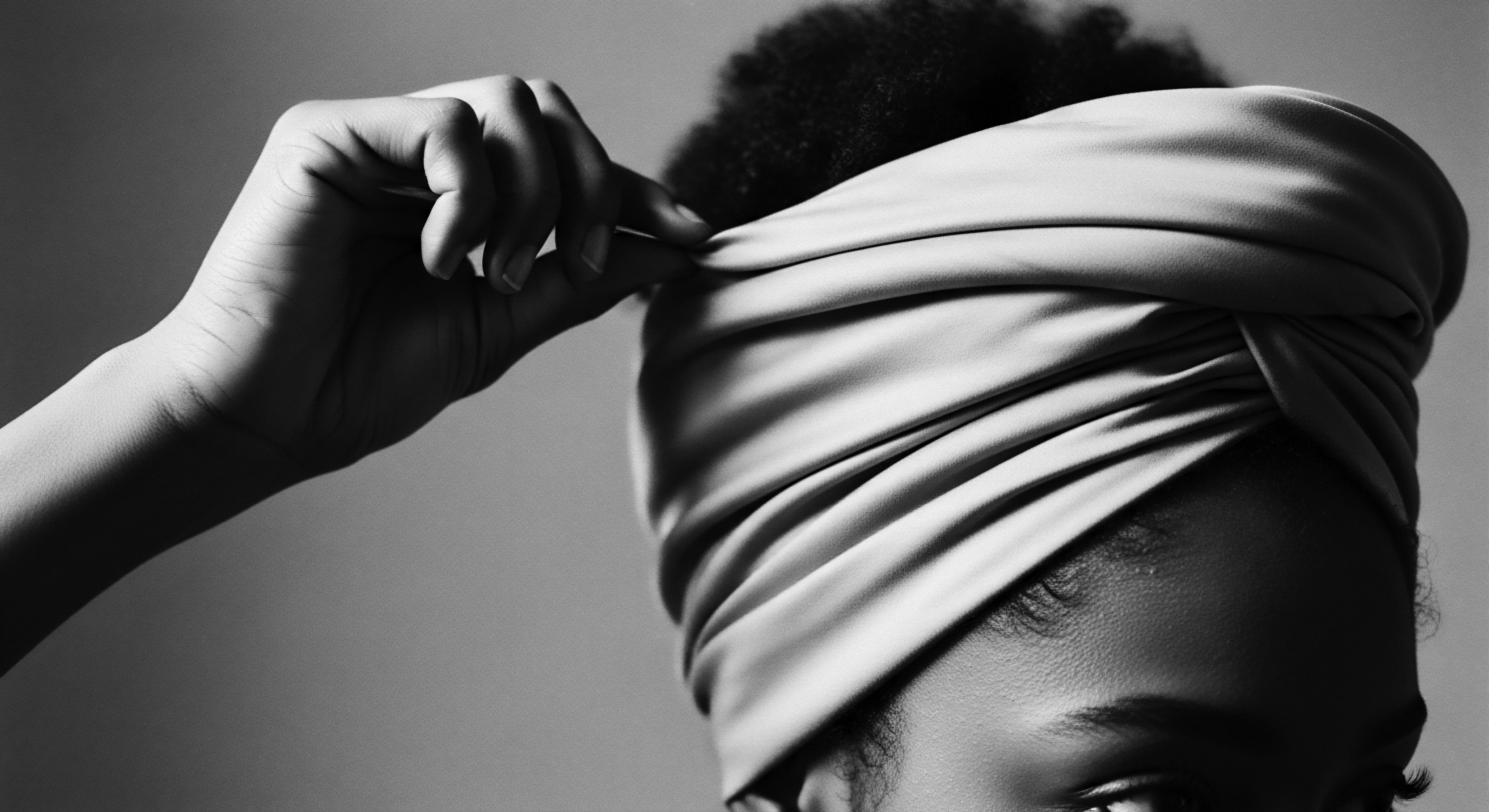
Silk Satin Benefits
Meaning ❉ Silk Satin Benefits refer to the protective qualities of smooth fabrics, reducing friction and preserving moisture for hair health.

What protective functions do headwraps offer for textured hair heritage?
Headwraps protect textured hair by guarding against environmental damage, retaining moisture, and reducing friction, deeply rooted in Black heritage.

How do coverings protect textured hair at night?
Coverings shield textured hair from friction, retain essential moisture, and preserve delicate styles while honoring a rich heritage of care.

Reduced Friction
Meaning ❉ Reduced Friction minimizes mechanical stress on textured hair, preserving its integrity through gentle care rooted in ancestral wisdom.

Hair Bonnet Heritage
Meaning ❉ The Hair Bonnet Heritage encompasses ancient wisdom and continuous practice of protecting textured hair through intentional coverings for health and cultural identity.

Satin Weave Hair
Meaning ❉ Satin Weave Hair denotes the beneficial interaction of hair with smooth fabrics, preserving moisture and preventing damage, rooted in ancestral hair care wisdom.

Satin Scarves
Meaning ❉ The satin scarf is a protective hair covering that minimizes friction and preserves moisture, rooted in ancestral practices for textured hair care.
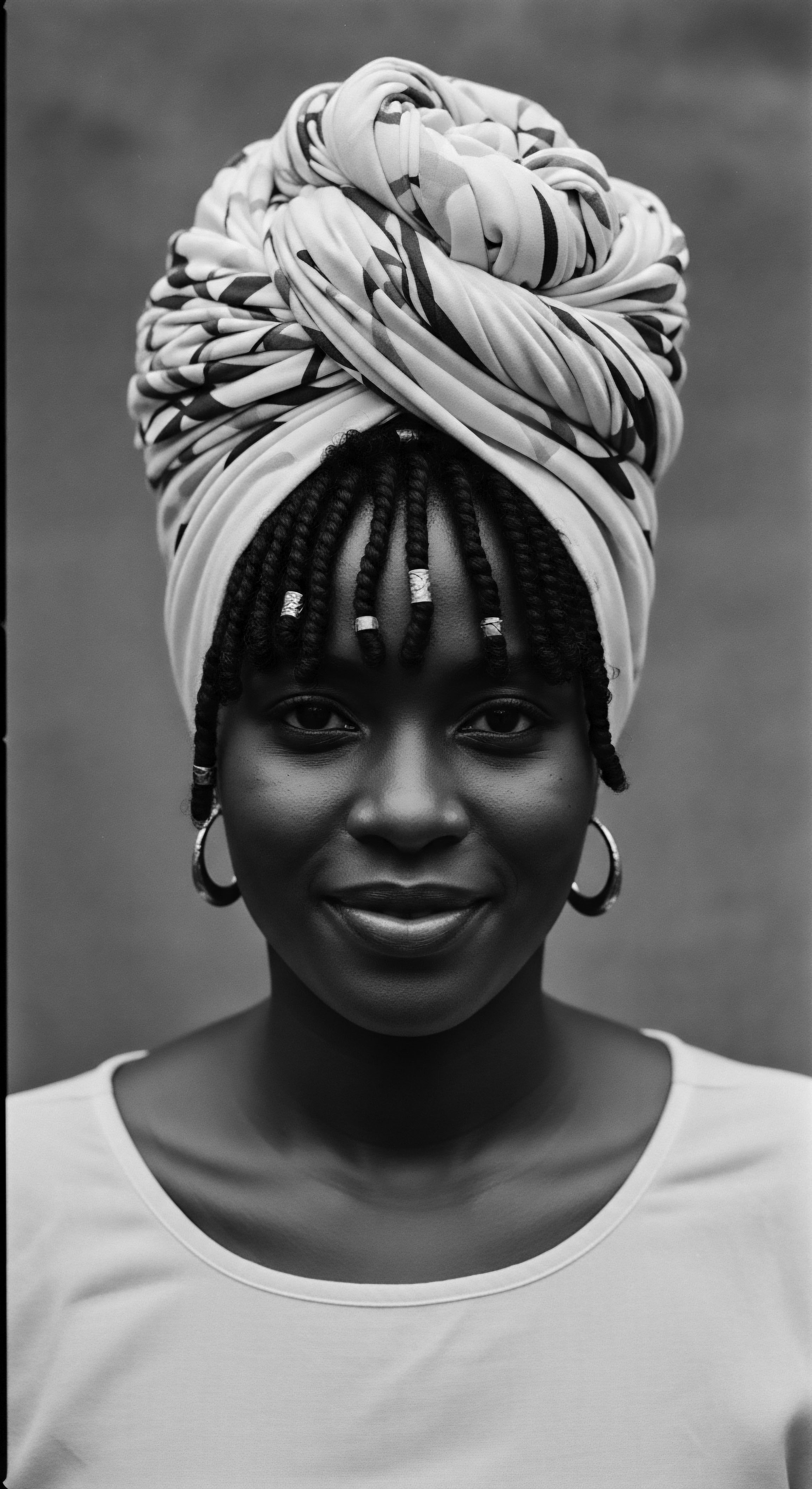
Do head wraps protect textured hair from damage?
Head wraps shield textured hair from environmental damage and friction, a protective practice deeply rooted in ancestral heritage.

Anti-Friction
Meaning ❉ Anti-friction is the deliberate reduction of resistive forces on textured hair, preserving its integrity and celebrating ancestral care traditions.
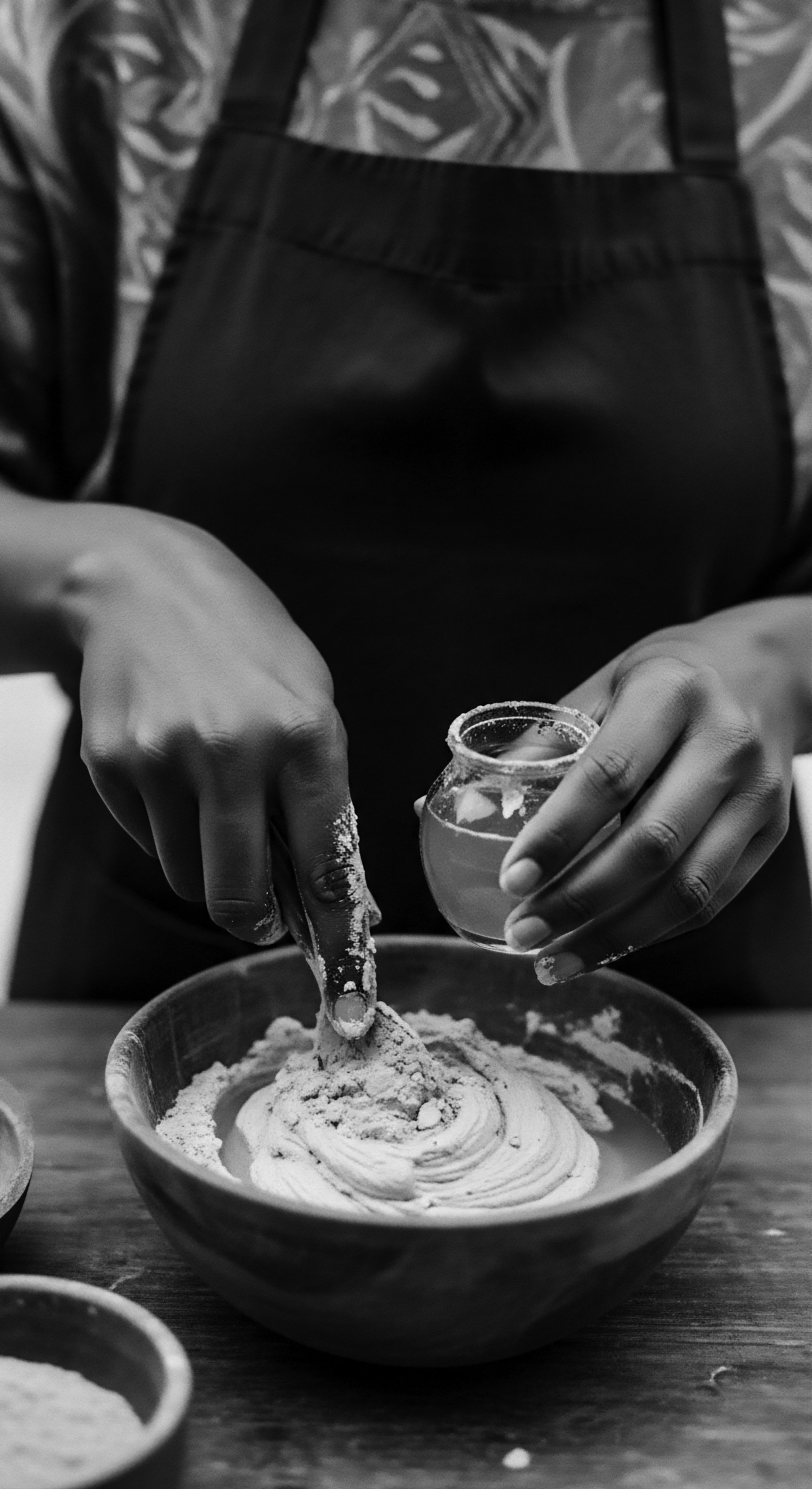
Satin Fabric Definition
Meaning ❉ The Satin Fabric Definition refers to a weave technique providing a smooth surface that minimizes hair friction and preserves moisture, rooted in ancestral care.
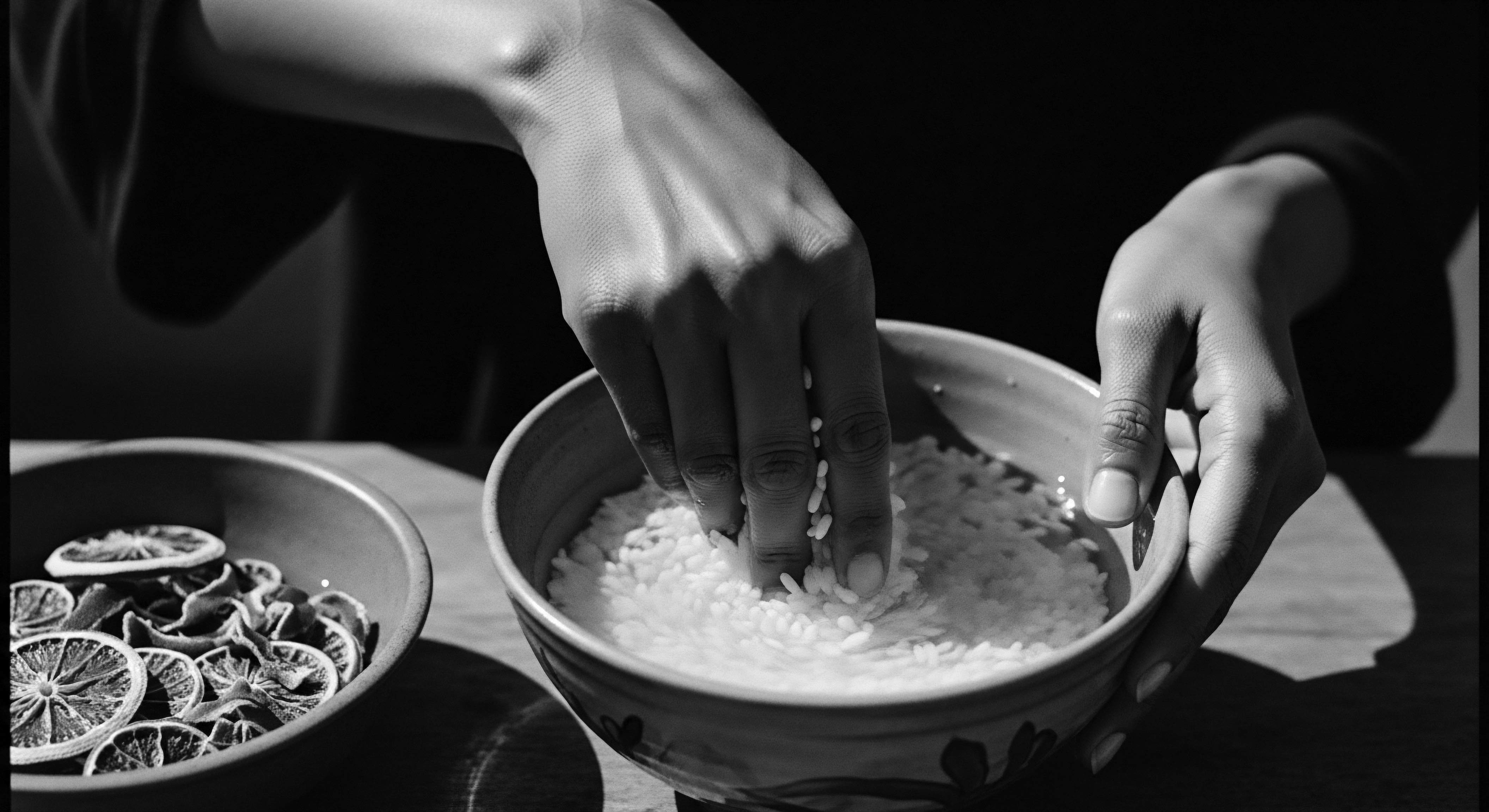
Satin Hair Care
Meaning ❉ Satin Hair Care refers to the practice of using satin or silk materials to reduce hair friction and retain moisture, rooted in ancestral hair preservation traditions.
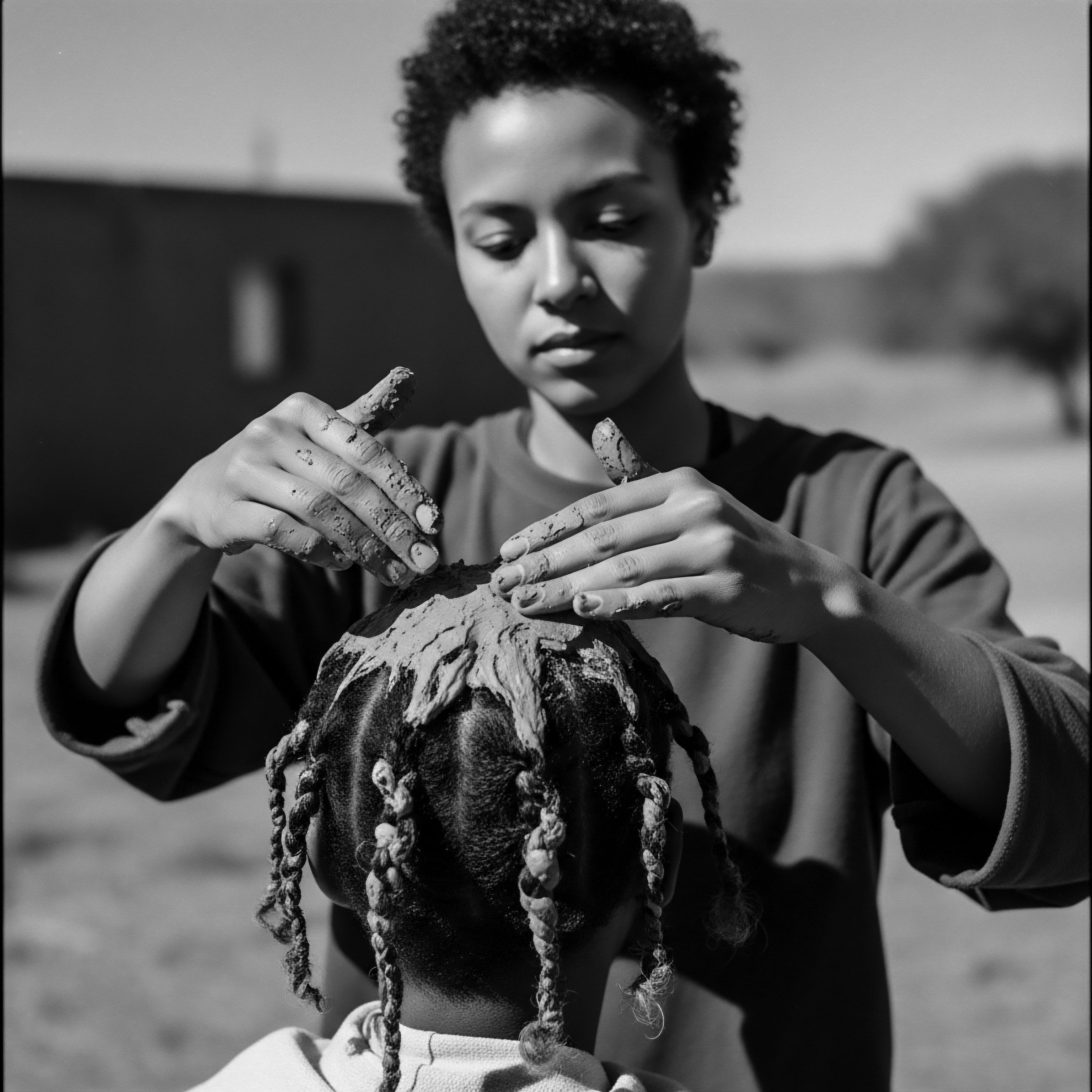
Sleep Hair Health
Meaning ❉ Sleep Hair Health is the practice of protecting and nourishing hair overnight, rooted in ancestral traditions, particularly for textured hair.
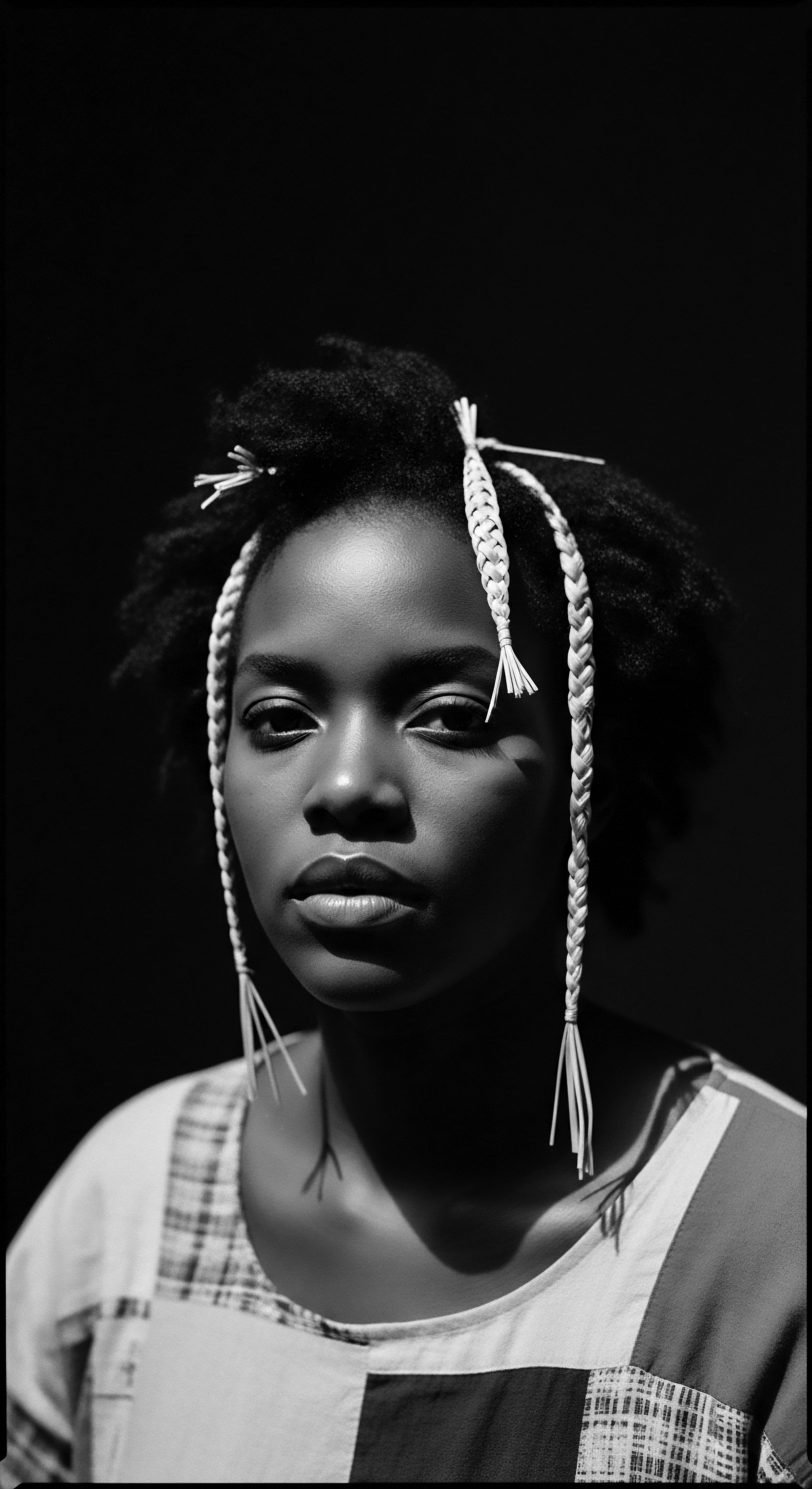
Silk Hair Benefits
Meaning ❉ Silk Hair Benefits refers to the protective advantages of silk fiber for textured hair, rooted in ancestral practices and scientifically validated for reducing friction and preserving moisture.
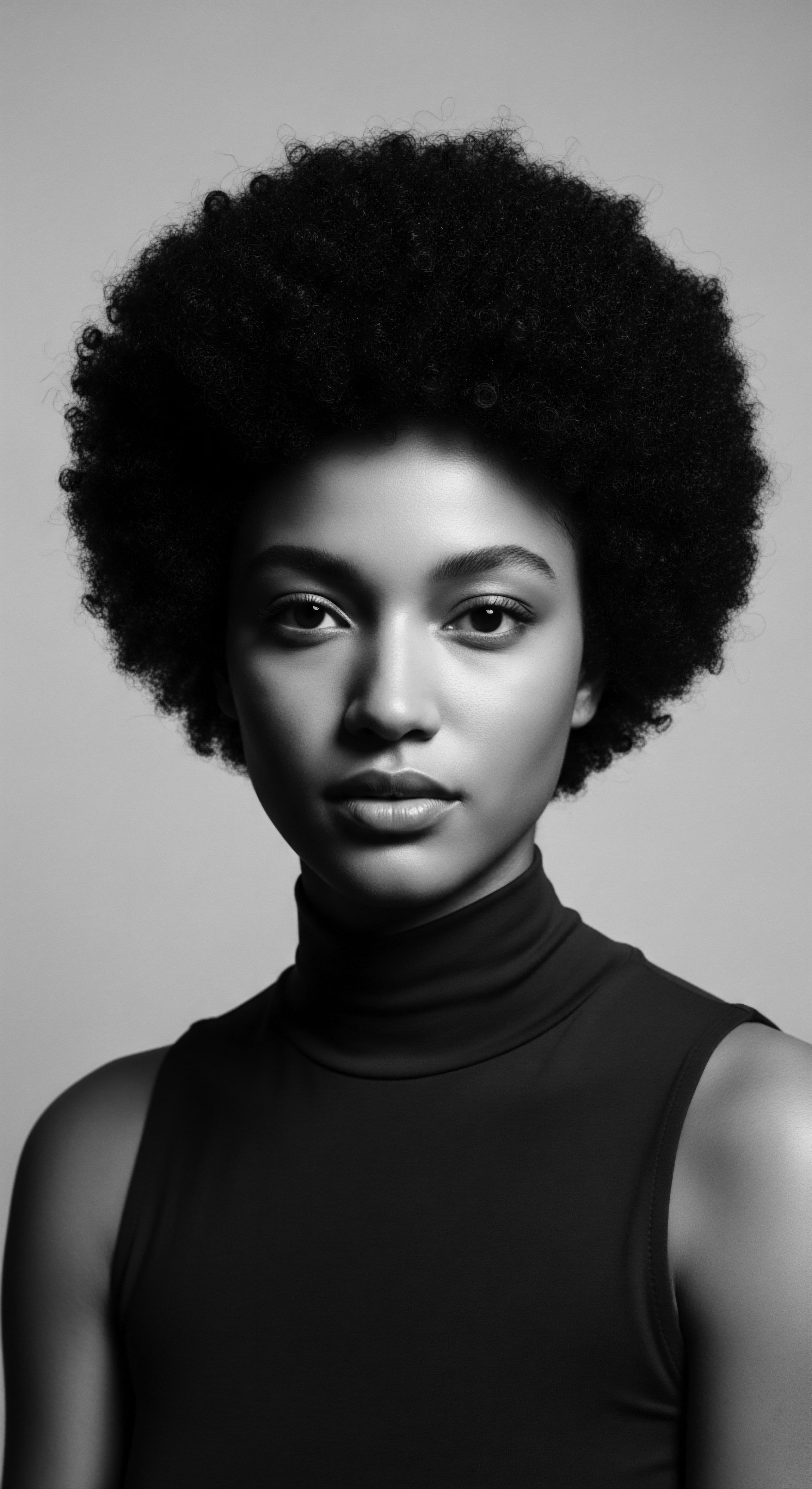
Silk Hair Coverings
Meaning ❉ Silk hair coverings are protective headwear, historically and culturally significant for preserving textured hair health and identity.
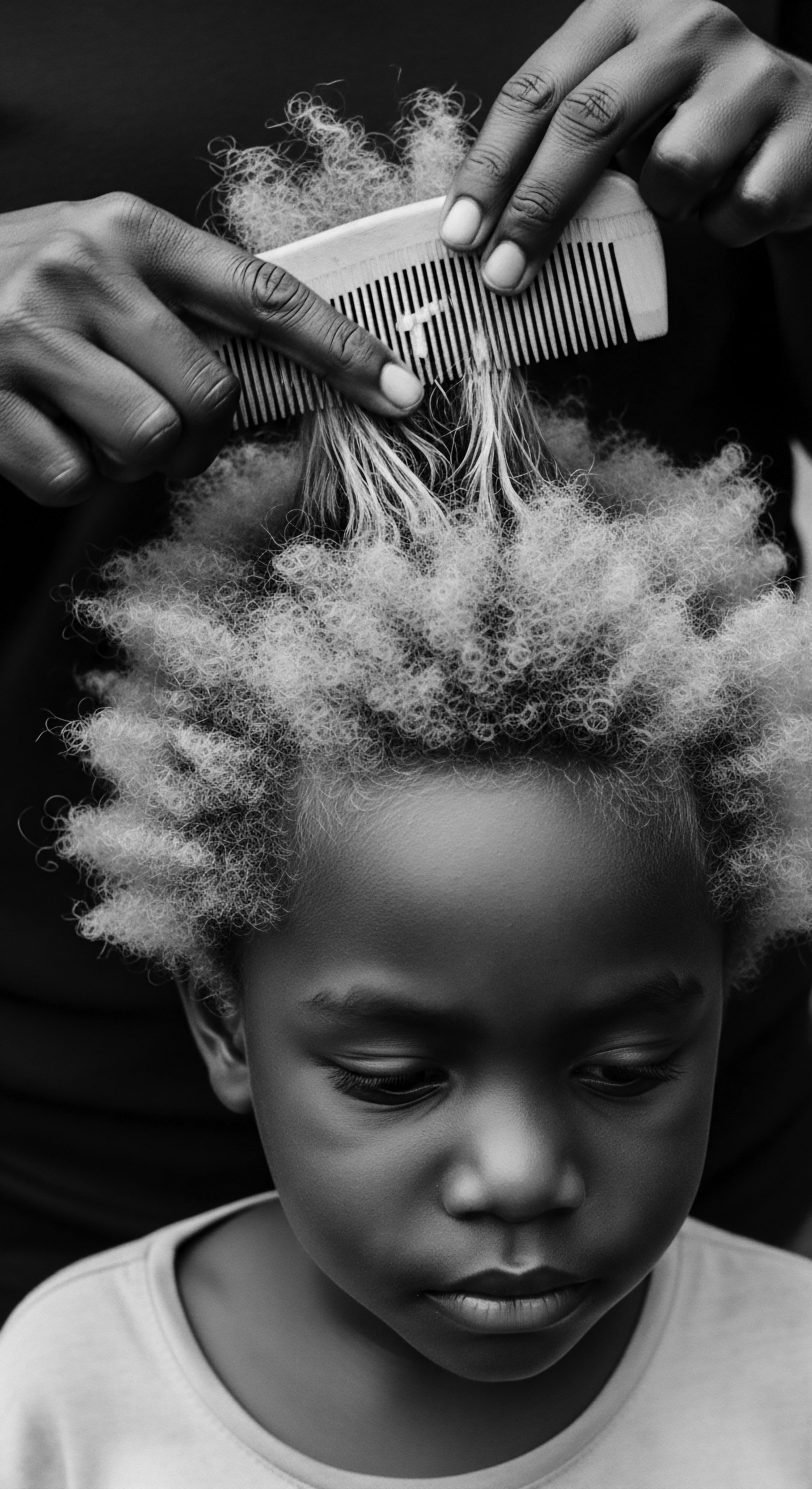
What historical textiles offered friction protection for coily hair?
Historical textiles like fine linen and silk, alongside carefully chosen cottons, provided crucial friction protection for coily hair, rooted in ancestral wisdom.

How do bonnets protect hair at night?
Bonnets protect textured hair at night by reducing friction and retaining moisture, a practice deeply rooted in Black hair heritage and ancestral wisdom.

Nighttime Hair Protection
Meaning ❉ Nighttime Hair Protection refers to deliberate methods of safeguarding hair during sleep to reduce damage, preserve moisture, and maintain style, deeply rooted in textured hair heritage.

